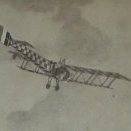-
Posts
378 -
Joined
-
Last visited
About Paul_Hardy
- Birthday 08/20/1953
Contact Methods
-
MSN
pghardy@hotmail.com
-
Website URL
http://www.paulhardy.net/paul/
-
ICQ
0
Profile Information
-
Gender
Male
-
Interests
English concertina. Computers. Walking/rambling/hiking.
-
Location
Cambridge, UK
Recent Profile Visitors
3,116 profile views
Paul_Hardy's Achievements

Chatty concertinist (4/6)
-

DIY Hall effect bellows sensor for MIDI concertina
Paul_Hardy replied to caj's topic in Instrument Construction & Repair
My midi concertina (a Roy Whiteley conversion of a Lachenal - see https://pghardy.net/concertina/lachenal_30566_midi/lachenal_30566_midi.html) uses Hall effect sensors to sense button presses (actually pad lift). The contactless switching is much better than contact switched keying. -
It's one of those apparently simple subjects that leads one down a rabbit hole into a world of complexity. Firstly, a time signature says little about rhythm, and nothing about speed. It says how many written beats in a bar, and the written length of each beat. Secondly, Reel, Hornpipe, Polka, March, Schottische etc were all originally particular dance step sequences. Now we often use them as rhythm descriptions, even when used for for difference dances. Thirdly, the words are also used differently in different countries (or parts of countries), so there is not a single answer! Also their meaning has changed through time, so a hornpipe was presumably originally just a tune played on a pipe made of horn! Then it was a triple-time tune in 3/2, then a performance dance for sailors, and now it is usually a swung tune in 4/4. The way I understand them and tend to use them in my tunebooks is: A reel is a faster tune, usually written in 4/4 but which has two stronger beats in each bar, so can sometimes be written in 2/2. Reels often have each bar split into quavers, and played and danced in a pretty even rhythm - Abcd Efgh A Hornpipe in 4/4 is a bit slower and has a swung (dotted) rhythm, where each pair of quavers, although written straight are played with the first longer than the second, as in Thursday. They are sometimes written out as dotted-crotchet, semiquaver, but that would mean the ration was 3:1 - however I play them as about 2:1. A Polka is usually written in 2/2 (or 2/4), and the dance has a lively bouncy dash-dot-dot pattern. A March is a more regular tune in 2/2 or 2/4. When you think you understand those sort of stronger dance beat rhythm aspects, then you find that when playing for dance it's not uncommon to stress the off-beats - the dancers will put their feet down on the 'strong' beats OK but the music needs to encourage them to lift the feet, so more complexity unfolds! Also, it's not difficult to slow down a reel, and swing its rhythm to turn it into a hornpipe, so tunes are mutable between rhythms!
-
I've successfully used this "round end of drill bit" technique in the past, exactly as you describe (but without the lubricant), to cure a sticking button.
-
I have had intermittent pins and needles and partial numbness in extremities (firstly hands, then also feet) for a few years now. I think it is due to arthritis in the upper neck vertebrae putting pressure on the spinal cord. The trigger is spending much time looking sharply down (e.g. at feet when hiking down hills), or craning the neck back to look up, or sleeping in curled posture. . I noticed it particularly during Covid lockdowns when I was spending a lot of time reading with a book or Kindle down on my lap. Interestingly, it doesn't seem to particularly affect my concertina playing. I had various tests done (including nerve function, which was slightly degraded but not severe) but no real medical suggestions, other than to keep the neck motion active, but avoid lots of looking up or down! Does any of that sound familiar? I'd be interested to hear how your tests pan out.
-

Question for Baritone English players....
Paul_Hardy replied to Matthew Heumann's topic in General Concertina Discussion
... And I'm generally only playing one note at a time, other than for final ending chord, as I mainly use it for part-planing in duets/ensembles/bands. I see that others are using their baritones for chordal accompaniments and I can see that five-fold bellows could be a problem then. -

Question for Baritone English players....
Paul_Hardy replied to Matthew Heumann's topic in General Concertina Discussion
My George Case baritone (https://pghardy.net/concertina/case_baritone/case_baritone.html) only has 5-fold bellows, and I've never found it a problem. Mind you, my playing style tends to reverse bellows direction every couple of bars. -

Play along with this Monks March fun!
Paul_Hardy replied to Jody Kruskal's topic in Concertina Videos & Music
This properly should be called Monck's March - General George Monck marched his Parliamentary army from Scotland to London in January 1660, and was then crucial to the bloodless restoration of England as a Kingdom, inviting the future Charles II from France, and escorting him from Dover to London to become King. Charles later made him Duke of Albemarle. This was despite Monck previously having been general to Oliver Cromwell, defeating the royalists in Scotland! Monck had a reputation for avoiding battles, and for turning up late for them, and it is often said that the somewhat stop/start nature of this well-known tune is in honour of this habit. Regards -
Happy Birthday Sir Charles Wheatstone! My contribution to World Concertina Day 2024 is Coilsfield House, by Nathaniel Gow around 1800, played by me on a Lachenal New Model 57494 from 1919. .
-
The Englitina is a remarkable app, and I've praise for Michael Eskin's work in general. It's also by far the cheapest way of trying out the concertina concept. But, and this is a big but, you get no tactile cues to keep the fingers on the right button locations - the iPad screen is flat. If the child can cope and play a tune then fine - they will be able to play on a 'proper' concertina also. However if they can't cope, then it doesn't mean that they couldn't play a proper concertina. I play many different English tinas, and I struggle to get a sensible tune out of the Englitina. I start off OK, but my fingers slide slightly off position, and I haven't got the centring cues that real buttons provide.
-
It applies the other way round as well. I possess a John Conner English (rare as he mainly made Anglos) which is very loud and fast, but is appreciably heavy because he engineered everything very sturdily. See https://pghardy.net/concertina/connor_2/index.html.
-
To play along to, I recorded (on concertina) all 685 tunes in my session tunebook (https://pghardy.net/tunebooks/) played first slowly then faster - see https://pghardy.net/greenshoots/virtual/, or an alphabetical list at https://pghardy.net/tunebooks/pgh_session_tunebook_recordings.html. Or the Tunebooks page has instructions for downloading the ABC for all the tunes and using a computer app to play them to you at whatever speed you want.
-

How did you find your way to concertina?
Paul_Hardy replied to Capitanya's topic in General Concertina Discussion
I too played cello as a child - a beautiful but totally impracticable instrument that tends to get boring parts to play. I gave it up when I went to university. I dabbled with guitar, but then basically did no music making for 20 years (one of my few regrets in life). Just after university, I went to a ceilidh, where one of the band who had been playing a strange small squeezebox came front and centre during the interval and played a range of haunting music on it. In particular he played Planxty Irwin, which is a brain-worm and stayed with me for 20 years. When he finished I located him and asked about the instrument - an English concertina, invented by Sir Charles Wheatstone, and he explained its benefits. However at the time I was pretty penniless so didn't follow it up. For my 40th birthday my wife asked if there was anything special I'd like for a decadal anniversary, and I casually mentioned an English concertina. She didn't respond at the time, but I discovered later went off to the local music shop (Ken Stevens in Cambridge) and got one under hire-purchase - renting it for six months with the rent being deductible from the purchase price. After six months I'd decided I could make it work so I bought it. I still have it 30 years later - https://pghardy.net/concertina/lachenal_58748/lachenal.html, plus just a few more! -
Pre-Covid, it was also played fairly frequently at the Anahata/Mary Humphreys sessions around Cambridge. If anyone wants the dots, I had the privilege to meet Mats when he gave a workshop at a Scandinavian Squeeze-in a few years ago, and he gave me permission to include the tune in my Session Tunebook (https://pghardy.net/tunebooks/#session). It's filed under "Streamers and Confetti", but has "Serpentiner och Konfetti" as its subtitle. If anyone prefers to learn it by ear, there is a slow then faster version in my tunebook recordings page (https://pghardy.net/tunebooks/pgh_session_tunebook_recordings.html), along with the other 684 tunes!
- 1 reply
-
- 2
-

-

-

How many concertinas have you owned/tried?
Paul_Hardy replied to LR71's topic in General Concertina Discussion
Rethinking, numbers #5 and #6 are the same instrument (reincarnated as MIDI), so I only have 14 to track down! I do an annual audit, so that's a New Year resolution to do it this week. -

How many concertinas have you owned/tried?
Paul_Hardy replied to LR71's topic in General Concertina Discussion
I've owned 19 English and 2 Anglos. See https://pghardy.net/concertina/index.html for list and pictures. I've sold 3 of the English, and 3 more are out on loan, so presumably I currently have have 15. Of these, three English and one Anglo are currently works in progress being re-fettled in the man-shed.





.thumb.jpg.c7da1746f466df75a2486cf73bb7976e.jpg)
